Neom becomes real-world building project
26 April 2023
 This package on Neom also includes:
This package on Neom also includes:
> SITE REPORT: World’s largest piling project shifts to The Line’s marina
> INTERVIEW: Neom to fix construction
> MOVIE SET: Neom advances plans to be leading movie destination
> TUNNELS: Neom tenders Delta Junction tunnel contracts
> OXAGON: Work to start for $1.5bn Oxagon wind turbine plant

The launch of Neom by Saudi Arabia’s Crown Prince Mohammed bin Salman at the Future Investment Initiative (IFI) in Riyadh in October 2017 challenged the world’s imagination and marked the beginning of Saudi Arabia’s gigaprojects era.
Strategically located close to neighbouring Jordan and Egypt, the 26,500 square-kilometre project is about the size of Belgium. With a $500bn price tag, it quickly became known as the world’s largest construction project.
In the six years that followed, there has been a steady wave of announcements detailing the individual components of Neom. Each launch has been accompanied by marketing campaigns showcasing slick computer-generated imagery (CGI) of futuristic cities that aim to change how mankind will live.
Unless working on these projects directly, Neom has been an abstract idea for most people. That started to change in January when Neom released a progress video of construction work on Sindalah Island, which is due to open its doors in 2024. Then in March, MEED visited Neom to witness the work progressing The Line, which is now the world’s largest piling project.
The images of construction equipment toiling on site showed that after six years of planning, Neom is here.
In 2022, there were $13.6bn of contract awards at Neom, surpassed only by Saudi Arabia, the UAE and Qatar
Awards soar
As Neom morphs from a futuristic concept into a real-world building project, the construction industry has started to benefit from a sharp increase in contract awards, which by mid-April 2023 totalled $27bn.
As construction activity ramps up, the data shows that Neom is no longer a single project offering tactical opportunities. It has become a strategic market in its own right.
In 2022, there were $13.6bn of contract awards at Neom, surpassed only by Saudi Arabia, the UAE and Qatar.
On a submarket level, the total value of contract awards exceeds the Saudi capital Riyadh, where there were $11bn of awards, and Dubai, which has traditionally been regarded as a hotbed of construction, with $9.3bn of awards in 2022.
As tendering activity continues for major contracts, Neom’s prominence as a projects market will likely increase further.
So far, four major components of Neom have been officially launched by Prince Mohammed. They are The Line, Trojena,
Oxagon and Sindalah Island. Meanwhile, work has also progressed on other projects that have yet to be officially launched with the full CGI treatment, such as Neom International airport and the Gulf of Aqaba.
The Line was the first to be launched in January 2021 as a 170-kilometre linear belt of hyper-connected, car-free communities. Then in July 2022, the designs of The Line’s mirrored buildings were revealed. They are 200 metres wide and 500 metres above sea level, running entirely on renewable energy. Once complete, The Line will accommodate 9 million residents.
Piling work has started for the first modules of buildings that make up The Line (click here for images of the site). Infrastructure work for The Spine, the infrastructure corridor parallel to The Line that includes the high-speed rail, is also advancing.
Floating city
The second major project launch was Oxagon industrial city in November 2021. It will be built around an integrated port and logistics hub, with its octagonal design minimising environmental impact and optimising land usage. The city will feature the world’s largest floating structure and be powered by 100 per cent clean energy.
The first major area of construction for Oxagon is the expansion of the existing Duba port. A contract for the first phase of that project was awarded earlier this year and a second phase is being tendered.
In March 2022, Prince Mohammed announced Trojena. Located in the mountains, it has temperatures 10 degrees Celsius lower than other regional cities and offers the potential for snow-covered ski slopes.
 Trojena dams face countdown to make it snow
Trojena dams face countdown to make it snow
Trojena received added impetus in October last year when it was selected to host the ninth Asian Winter Games in 2029. Trojena will have two competition clusters for the games: a snow cluster for sports, including alpine skiing, snowboarding and slalom; and an ice cluster for sports, including ice hockey, figure skating and curling. The games village will have 14 luxury hotels and be powered entirely by renewable energy.
Construction contracts covering major infrastructure elements such as three major dams are at the tendering stage. Procurement activity is also starting for major buildings such as The Vault, which is a 198-metre-high, 253-metre-wide and 864-metre-long building that will serve as the gateway to Trojena.
Sindalah, Neom’s first luxury island destination, was announced in December 2022 and construction work is advancing (see main image). Once complete, the island will feature a marina, hotels and a golf course.
Delivering these projects is a major challenge for the construction sector. Resource scarcity is a key issue for all projects in the kingdom, with construction companies already struggling to meet the demand for their services and expertise. Neom, along with its owner, the Public Investment Fund (PIF), is taking steps to address these challenges by investing in local construction firms, attracting international companies, improving payment terms and adopting alternative procurement methods. Despite these efforts, the construction sector faces sustained pressure.
New economy
Neom is much more than just a collection of construction projects. While other projects in the region offer opportunities for the construction sector and associated asset management services such as facilities management and hotel operation, the scale of Neom means it is creating a new economy.
It is an economy that not only aims to support the development of nine sectors to achieve the goals outlined in Vision 2030, but also intends to transform the way those sectors operate.
The industrial city Oxagon will play a key role. Neom plans to create an integrated port and logistics hub that will be home to seven innovative sectors: sustainable energy, autonomous mobility, water innovation, sustainable food production, health and wellbeing, technology and digital manufacturing, and modern methods of construction.
The Neom green fuels project is key to Oxagon’s clean energy ambitions. The integrated facility will produce hydrogen to be synthesised into carbon-free ammonia. Full construction work began on the project earlier this year after it reached financial closure. The facility is expected to be commissioned in 2026.
Neom, US-based Air Products and Acwa Power each have a 33.3 per cent stake in Neom Green Hydrogen Company, the special project vehicle implementing the project.
Aviation is another major area of investment. Neom plans to start operating its own airline, Neom Airlines, at the end of 2024 from the existing Neom Bay airport before operating from Neom International – a greenfield development inland close to Tabuk at the end of The Line.
Neom will morph from a construction project into a full-fledged economy
International airport
Plans for the international airport are advancing. US firm Aecom has been awarded a contract to provide project management consultancy services, and a series of construction and supply contracts are due to be tendered this year.
Although not confirmed, it is understood the first phase of the airport will have the capacity to handle 25 million passengers a year. A second phase could take the capacity up to 50 million a year. There is an aspiration for the airport to become the largest in the world, with a capacity of 100 million passengers a year.
 Another sector developing quickly is media. In April, Neom furthered its ambition to become the region’s leading TV and film production hub by opening more stages at its Media Village. The village now has four stages offering 12,000 sq m of production space. Six more stages are under development. Neom is also increasing its resort-style accommodation for cast and crew.
Another sector developing quickly is media. In April, Neom furthered its ambition to become the region’s leading TV and film production hub by opening more stages at its Media Village. The village now has four stages offering 12,000 sq m of production space. Six more stages are under development. Neom is also increasing its resort-style accommodation for cast and crew.
As well as gaining access to filming locations across Neom’s varied landscapes, companies using the facilities can enjoy Neom’s highly attractive production incentives, including cash rebates of over 40 per cent.
As these sectors and others advance, Neom will morph again from a construction project into a full-fledged economy. When launched in 2017, its GDP was projected to reach $100bn by 2030 – equivalent at the time to more than one-seventh of the kingdom’s GDP of $688bn. By focusing on nine high-value sectors, the Neom economy will be an affluent one. Its GDP per capita is projected to become the highest in the world.
Main image: Construction work is advancing on Sindalah Island, which is planned to open in early 2024. Credit: Neom
MEED's April 2023 special report on Saudi Arabia includes:
> GIGAPROJECTS: Saudi Arabia under project pressure
> ECONOMY: Riyadh steps up the Vision 2030 tempo
> CONSTRUCTION: Saudi construction project ramp-up accelerates
> UPSTREAM: Aramco slated to escalate upstream spending
> DOWNSTREAM: Petchems ambitions define Saudi downstream
> POWER: Saudi Arabia reinvigorates power sector
> WATER: Saudi water begins next growth phase
> BANKING: Saudi banks bid to keep ahead of the pack
Exclusive from Meed
-
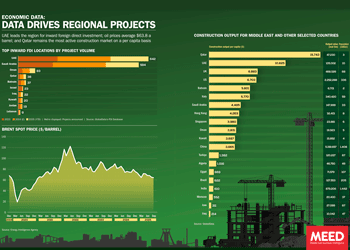 December 2025: Data drives regional projects
December 2025: Data drives regional projects23 December 2025
-
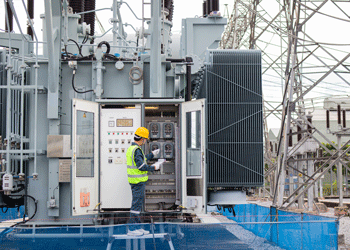 Local firm bids lowest for Kuwait substation deal
Local firm bids lowest for Kuwait substation deal22 December 2025
-
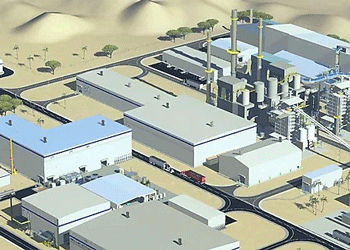 Saudi-Dutch JV awards ‘supercentre’ metals reclamation project
Saudi-Dutch JV awards ‘supercentre’ metals reclamation project22 December 2025
-
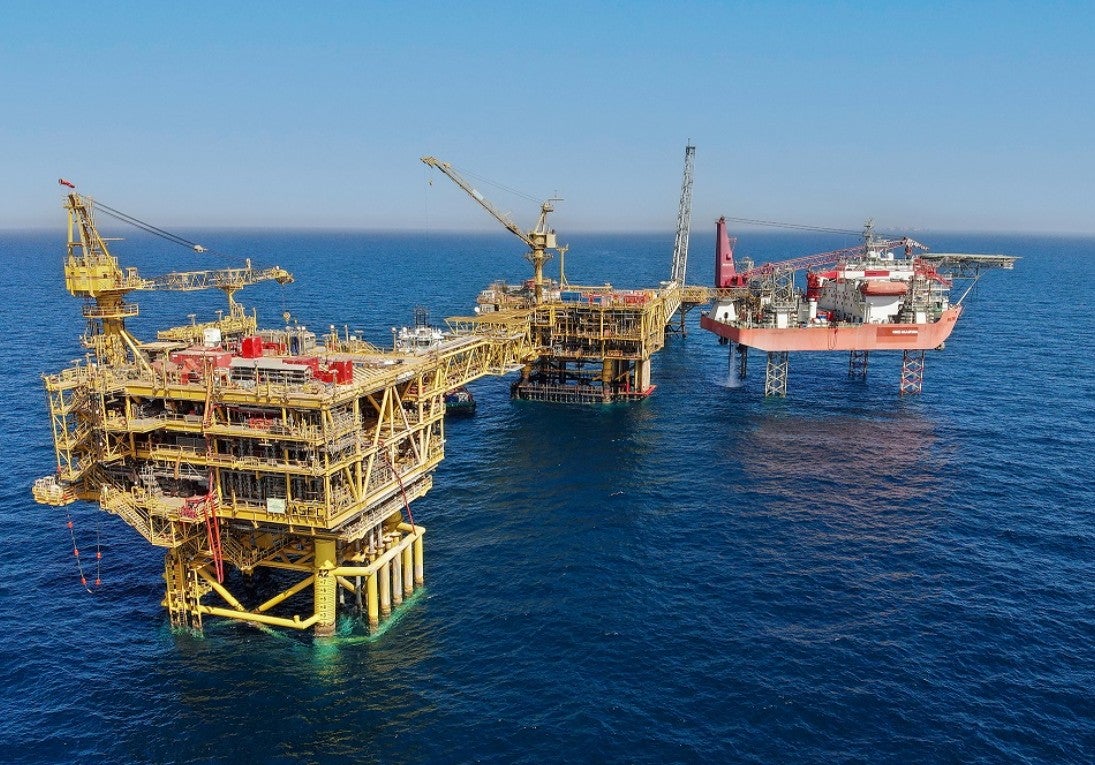 QatarEnergy LNG awards $4bn gas project package
QatarEnergy LNG awards $4bn gas project package22 December 2025
-
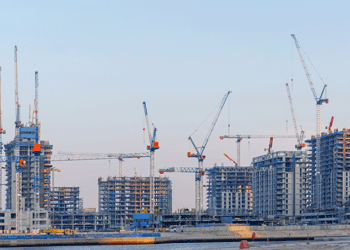 Managing risk in the GCC construction market
Managing risk in the GCC construction market19 December 2025
All of this is only 1% of what MEED.com has to offer
Subscribe now and unlock all the 153,671 articles on MEED.com
- All the latest news, data, and market intelligence across MENA at your fingerprints
- First-hand updates and inside information on projects, clients and competitors that matter to you
- 20 years' archive of information, data, and news for you to access at your convenience
- Strategize to succeed and minimise risks with timely analysis of current and future market trends

Related Articles
-
 December 2025: Data drives regional projects
December 2025: Data drives regional projects23 December 2025
Click here to download the PDF
Includes: Top inward FDI locations by project volume | Brent spot price | Construction output
MEED’s January 2026 report on Oman includes:
> COMMENT: Oman steadies growth with strategic restraint
> ECONOMY: Oman pursues diversification amid regional concerns
> BANKING: Oman banks feel impact of stronger economy
> OIL & GAS: LNG goals galvanise Oman’s oil and gas sector
> POWER & WATER: Oman prepares for a wave of IPP awards
> CONSTRUCTION: Momentum builds in construction sectorTo see previous issues of MEED Business Review, please click herehttps://image.digitalinsightresearch.in/uploads/NewsArticle/15306140/main.gif -
 Local firm bids lowest for Kuwait substation deal
Local firm bids lowest for Kuwait substation deal22 December 2025
The local Al-Ahleia Switchgear Company has submitted the lowest price of KD33.9m ($110.3m) for a contract to build a 400/132/11 kV substation at the South Surra township for Kuwait’s Public Authority for Housing Welfare (PAHW).
The bid was marginally lower than the two other offers of KD35.1m and KD35.5m submitted respectively by Saudi Arabia’s National Contracting Company (NCC) and India’s Larsen & Toubro.
PAHW is expected to take about three months to evaluate the prices before selecting the successful contractor.
The project is one of several transmission and distribution projects either out to bid or recently awarded by Kuwait’s main affordable housing client.
This year alone, it has awarded two contracts worth more than $100m for cable works at its 1Z, 2Z, 3Z and 4Z 400kV substations at Al-Istiqlal City, and two deals totalling just under $280m for the construction of seven 132/11kV substations in the same township.
Most recently, it has tendered two contracts to build seven 132/11kV main substations at its affordable housing project, west of Kuwait City. The bid deadline for the two deals covering the MS-01 through to MS-08 substations is 8 January.
https://image.digitalinsightresearch.in/uploads/NewsArticle/15305745/main.gif -
 Saudi-Dutch JV awards ‘supercentre’ metals reclamation project
Saudi-Dutch JV awards ‘supercentre’ metals reclamation project22 December 2025
The local Advanced Circular Materials Company (ACMC), a joint venture of the Netherlands-based Shell & AMG Recycling BV (SARBV) and local firm United Company for Industry (UCI), has awarded the engineering, procurement and construction (EPC) contract for the first phase of its $500m-plus metals reclamation complex in Jubail.
The contract, estimated to be worth in excess of $200m, was won by China TianChen Engineering Corporation (TCC), a subsidiary of China National Chemical Engineering Company (CNCEC), following the issue of the tender in July 2024.
Under the terms of the deal, TCC will process gasification ash generated at Saudi Aramco’s Jizan refining complex on the Red Sea coast to produce battery-grade vanadium oxide and vanadium electrolyte for vanadium redox flow batteries. AMG will provide the licensed technology required for the production process.
The works are the first of four planned phases at the catalyst and gasification ash recycling ‘Supercentre’, which is located at the PlasChem Park in Jubail Industrial City 2 alongside the Sadara integrated refining and petrochemical complex.
Phase 2 will expand the facility to process spent catalysts from heavy oil upgrading facilities to produce ferrovanadium for the steel industry and/or additional battery-grade vanadium oxide.
Phase 3 involves installing a manufacturing facility for residue-upgrading catalysts.
In the fourth phase, a vanadium electrolyte production plant will be developed.
The developers expect a total reduction of 3.6 million metric tonnes of carbon dioxide emissions a year when the four phases of the project are commissioned.
SARBV first announced its intention to build a metal reclamation and catalyst manufacturing facility in Saudi Arabia in November 2019. The kingdom’s Ministry of Investment, then known as the Saudi Arabian General Investment Authority (Sagia), supported the project.
In July 2022, SARBV and UCI signed the agreement to formalise their joint venture and build the proposed facility.
The project has received support from Saudi Aramco’s Namaat industrial investment programme. Aramco, at the time, also signed an agreement with the joint venture to offtake vanadium-bearing gasification ash from its Jizan refining complex.
Photo credit: SARBV
https://image.digitalinsightresearch.in/uploads/NewsArticle/15305326/main.gif -
 QatarEnergy LNG awards $4bn gas project package
QatarEnergy LNG awards $4bn gas project package22 December 2025
QatarEnergy LNG, a subsidiary of state-owned QatarEnergy, has awarded the main engineering, procurement, construction and installation (EPCI) contract for a major package for the second phase of its North Field Production Sustainability (NFPS) project.A consortium comprising the Italian contractor Saipem and state-owned China Offshore Oil Engineering Company (COOEC) has secured the EPCI contract for the COMP5 package. The contract value is $4bn, with Saipem declaring its share to be worth $3.1bn.
Milan-headquartered Saipem said the contract will run for about five years. The scope of work comprises engineering, procurement, fabrication and installation of two compression complexes, each including a compression platform, a living quarters platform, a flare platform supporting the gas combustion system, and the related interconnecting bridges. Each complex will have a total weight of about 68,000 tonnes.
Offshore installation operations will be carried out by Saipem’s De He construction vessel in 2029 and 2030.
MEED previously reported that the following contractors submitted bids for the NFPS phase two COMP5 package:
- Larsen & Toubro Energy Hydrocarbon (India)
- McDermott (US)
- Saipem/China Offshore Oil Engineering Company (Italy/China)
QatarEnergy LNG, formerly Qatargas, is said to have issued the tender for the NFPS phase two COMP5 package in the first quarter of the year.
Contractors submitted technical bids for the COMP5 package in late June, while commercial bids were submitted by 8 October, as per sources.
Based upon initial evaluation of bids by QatarEnergy LNG, L&TEH has emerged as the lowest bidder for the COMP5 package, followed by McDermott, with the consortium of Saipem and COOEC in third place, MEED reported in late October.
In the weeks following that, the project operator is said to have engaged all bidders for a final round of negotiations, during which the consortium of Saipem and COOEC is believed to have “clinched the deal”, according to sources.
The detailed scope of work on the COMP5 package covers the EPCI work on the following:
- Two gas compression platforms, each weighing 30,000-35,000 tonnes, plus jacket
- Two living quarters platforms, plus jacket
- Two gas flare platforms, plus jacket
- Brownfield modification work at two complexes
NFPS scheme
QatarEnergy’s North Field liquefied natural gas (LNG) expansion programme requires the state enterprise to pump large volumes of gas from the North Field offshore reserve to feed the three phases of the estimated $40bn-plus programme.
QatarEnergy has already invested billions of dollars in engineering, procurement and construction works on the two phases of the NFPS project, which aims to maintain steady gas feedstock for the North Field LNG expansion phases.
The second NFPS phase will mainly involve building gas compression facilities to sustain and gradually increase gas production from Qatar’s offshore North Field gas reserve over the long term.
Saipem has been the most successful contractor on the second NFPS phase, securing work worth a total of $8.5bn.
QatarEnergy LNG awarded Saipem a $4.5bn order in October 2022 to build and install gas compression facilities. The main scope of work on the package, which is known as EPCI 2, covers two large gas compression complexes that will comprise decks, jackets, topsides, interconnecting bridges, flare platforms, living quarters and interface modules.
The gas compression complexes – CP65 and CP75 – will weigh 62,000 tonnes and 63,000 tonnes, respectively, and will be the largest fixed steel jacket compression platforms ever built.
Following that, Saipem won combined packages COMP3A and COMP3B of the NFPS project’s second phase in September last year.
The scope of work on the combined packages encompasses the EPCI of a total of six platforms, approximately 100 kilometres (km) of corrosion resistance alloy rigid subsea pipelines of 28-inches and 24-inches diameter, 100km of subsea composite cables, 150km of fibre optic cables and several other subsea units.
Separately, QatarEnergy LNG awarded McDermott the contract for the NFPS second phase package known as EPCI 1, or COMP1, in July 2023. The scope of work on the estimated $1bn-plus contract is to install a subsea gas pipeline network at the North Field gas development.
In March this year, India’s Larsen & Toubro Energy Hydrocarbon (LTEH) won the main contract for the combined 4A and 4B package, which is the fourth package of the second phase of the NFPS project and is estimated to be valued at $4bn-$5bn.
The main scope of work on the package is the EPCI of two large gas compression systems that will be known as CP8S and CP4N, each weighing 25,000-35,000 tonnes. The contract scope also includes compression platforms, flare gas platforms and other associated structures.
LTHE sub-contracted detailed engineering and design works on the combined 4A and 4B package to French contractor Technip Energies.
NFPS first phase
Saipem is also executing the EPCI works on the entire first phase of the NFPS project, which consists of two main packages.
Through the first phase of the NFPS scheme, QatarEnergy LNG aims to increase the early gas field production capacity of the North Field offshore development to 110 million tonnes a year.
QatarEnergy LNG awarded Saipem the contract for the EPCI package in February 2021. The package is the larger of the two NFPS phase one packages and has a value of $1.7bn.
Saipem’s scope of work on the EPCI package encompasses building several offshore facilities for extracting and transporting natural gas, including platforms, supporting and connecting structures, subsea cables and anti-corrosion internally clad pipelines.
The scope of work also includes decommissioning a pipeline and other significant modifications to existing offshore facilities.
In addition, in April 2021, QatarEnergy LNG awarded Saipem two options for additional work within the EPCI package, worth about $350m.
QatarEnergy LNG awarded Saipem the second package of the NFPS phase one project, estimated to be worth $1bn, in March 2021.
Saipem’s scope of work on the package, which is known as EPCL, mainly covers installing three offshore export trunklines running almost 300km from their respective offshore platforms to the QatarEnergy LNG north and south plants located in Ras Laffan Industrial City.
Saipem performed the front-end engineering and design work on the main production package of the first phase of the NFPS as part of a $20m contract that it was awarded in January 2019. This provided a competitive advantage to the Italian contractor in its bid to win the package.
https://image.digitalinsightresearch.in/uploads/NewsArticle/15305330/main2239.jpg -
 Managing risk in the GCC construction market
Managing risk in the GCC construction market19 December 2025

The scale and complexity of construction projects under way in the GCC region has attracted global attention. And while large-scale project announcements continue to dominate the headlines, the underlying risks – insufficient financing, harsh contract clauses and a tendency to delay dispute resolution – are often overlooked.
Around the region, many contractors are experiencing difficulties once projects have started because they mistakenly believe they have the necessary in-house skillsets to navigate these complex issues.
MEED has convened a panel of construction consultants and specialists to develop a checklist to help contractors and subcontractors operating in the region to navigate the market’s challenges as the sector moves into 2026.
The proactive steps are aimed at positioning a company so that it can maximise recovery and mitigate threats posed by unresolved claims and poor commercial or contractual administration.
Systemic risk
The regional market is characterised by several systemic issues that amplify risks for contractors.
The fundamental problem is finance. Projects frequently suffer because they are not fully financed from the start, which places financial strain on contractors. This problem is then compounded by the region’s traditional contractual environment, which means disputes are typically not finalised until well after jobs have been completed, creating cash flow problems for contractors, particularly near the end of such projects.
Further financial strain is created by unconditional performance guarantees and retention. The combined requirement for advance payment bonds, a 10% performance bond and sometimes 5%-10% retention represents a significant draw on contractors’ cash flow. The growing tendency of employers to pull bonds further exacerbates the situation.
Many contractors sign up to one-sided contracts so as to secure more work, rather than challenging their employers. Key contractual issues include:
> Unrealistic timelines: Contractors set themselves up to fail by accepting unrealistic timescales on projects, despite the knowledge that the work often takes twice as long.
> Deficient design: A major risk, particularly on high-profile projects, is a lack of specification and design progress. Many contracts, such as the heavily modified Silver Book – a standard contract published by the International Federation of Consulting Engineers (Fidic) for turnkey engineering, procurement and construction projects – presuppose that the contractor has sufficient information to design, build and deliver, even when there is substantive information missing, which renders lump-sum pricing obsolete and inevitably leads to dispute.
> Lowest-bid mentality: Contractors often fail to factor necessary commercial support from legal and claims specialists into their tender figures, making their bid appear more competitive but leaving them without a budget to seek help until it is too late. As a result, projects are managed with budgets that are barely sufficient, rather than being run properly to a successful conclusion.

Supply-chain erosion
The quality and capacity of the subcontractor market, particularly in the mechanical, electrical and plumbing (MEP) field, has eroded significantly.
Some major MEP players have closed or left the market due to underpricing, prompting contractors to call in their performance bonds. This means the region is receiving progressively lower quality for increasingly higher costs, further straining the delivery phase for main contractors.
The risk of subcontractor insolvency is increasing and must now be considered a primary project risk. Contractors should monitor financial health, diversify subcontractor dependencies, challenge allocated resources and secure step-in rights wherever possible.
Many Silver Book contracts in the GCC now include heavily amended, employer-friendly clauses that push design and ground-risk even further onto the contractor – often beyond what Fidic intended. These amendments require careful review and firm pushback.
The GCC remains a market of opportunity, but success in 2026 will belong to contractors that combine disciplined tendering, transparent commercial governance and early issue resolution. Optimism is not a strategy; preparation is.
A 10-point checklist for contractors in 2026
1. Mandate contractual due diligence: Invest time and money into a thorough contract review before signing. Be prepared to challenge harsh clauses, particularly those unfairly allocating risk, such as unknown conditions and full design responsibility. Assume that bespoke rather than standard amendments govern your entitlement. Treat the special conditions as the real contract.
2. Factor commercial support into the budget: Do not omit the cost of essential commercial support from the tender, such as quantity surveyor teams, quantum and delay specialists, legal review and claims preparation. Even if not visible in the front-line figures, this cost – which could be as low as 0.01% of the project value – must be factored in to ensure a budget for early and continuous engagement.
3. Prepare a realistic baseline programme: Stop committing to programmes just to fit the tender. Develop a realistic programme from the start, identifying risks and including necessary code books to track delays early. Consider commissioning an independent programme review at the tender stage – this is common internationally and reduces later arguments about logic, durations and sequencing.
4. Confirm project funding: Ensure that the project financing is fully in position before starting work. Many problems stem from projects that are only partially financed, leading to cash running out near completion. Gone are the days of not asking employers for greater transparency when it comes to funding projects.
5. Establish a strong commercial and claims function: This is where commercial management starts. Set up systems to ensure contractual compliance, including seven-day claim notifications. Variations are inevitable, and proper substantiation is required to secure entitlement – if it is not recorded, it cannot be recovered. Diaries, cost records and notice logs remain the foundation of entitlement.
6. Seek early specialist engagement: Prevention is better than a cure. Bring in specialists early to examine time and cost issues before problems arise. Consultants can provide advice, help set up the correct commercial systems and prevent the escalation of unresolved issues.
7. Adopt an old-school approach to claims management: Technology is useful, but nothing beats resolving issues face to face. Engage directly with the employer’s team regularly to negotiate and agree claims early. This manages the client’s expectations when it comes to budgeting and allows the contractor to secure cash flow sooner. A simple early-warning culture – even when not contractually required – prevents surprises and builds trust with the client.
8. Avoid wasting resources: Focus claims efforts only on events that are actually recoverable and demonstrably critical. Contractors often waste time chasing things that will not be recoverable. Prioritise issues that are both time-critical and clearly fall under the employer’s risk – everything else should be logged but not pursued aggressively.
9. Upskill internal teams: Use specialist involvement as an opportunity to upskill your in-house commercial team. Have them sit alongside specialist consultants to learn proper commercial and contractual administration processes, creating a lasting work-culture benefit.
10. Push for faster dispute resolution: When a dispute arises, advocate for a swift resolution mechanism like adjudication, mediation or expert determination to temporarily resolve cash flow issues. Dispute adjudication boards are intended to give quick, interim decisions. However, if not set up from the start of the project, the process becomes protracted – sometimes taking many months – so fails to provide the cash-flow relief contractors urgently need. Where clients resist adjudication, propose interim binding mediation or expert determinations, or failing this, milestone-based dispute workshops – anything that accelerates getting cash back on site. MEED would like to thank Refki El-Mujtahed of REM Consultant Services (refki@rem-consultant.com; www.rem-consultant.com) for facilitating this article, as well as the following co-contributors:
Aevum Consult | Lawrence Baker | lawrence.baker@aevumconsult.com | www.aevumconsult.com
Decerno Consultancy | Lee Sporle | leesporle@decernoconsultancy.com | www.decernoconsultancy.com
Desimone Consulting | Mark Winrow | Mark.Winrow@de-simone.com | www.de-simone.com
Forttas | Derek O’Reilly & Martin Hall | derek.oreilly@forttas.com & martin.hall@forttas.com | www.forttas.com
IDH Consult | Ian Hedderick | ian.hedderick@idhconsult.com | www.idhconsult.com
White Consulting | Nigel White | nigelwhite@whiteconsulting-me.com | www.whiteconsulting-me.com
https://image.digitalinsightresearch.in/uploads/NewsArticle/15289183/main.gif

